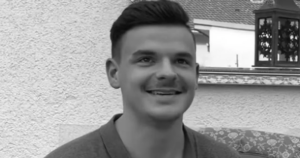There are childhood memories that span a lifetime and, in the case of Juan Uslé (Santander, 71 years old), even an entire work. At the age of six, the painter learned from the commotion he caused among his neighbors and, later, from photographs published in the press, that a ship had sunk off the coast of Langre (Cantabria), very close to his home. More than 25 years later, having just settled in his New York studio in 1986 thanks to a Fulbright scholarship, the painter inaugurated a new stage of his life in America, the same place from which the castaway had once set sail. Elorrio– recreating that episode from his childhood. However, in that large format painting titled 1960the ship was no longer submerged in the waters, but was kept safe on an island above the sea.
Starting from that work, and ending again at that point, the retrospective Juan Usle. That ship on the mountain (from 26 November 2025 to 20 April 2026), at the Reina Sofía Museum in Madrid, offers a temporally chronological and spatially circular journey of the 40-year career of the painter, one of the most international figures of contemporary Spanish art. From that New York which, from the moment he set foot there for the first time, seemed like “his home”, a place where “he had already lived before”, to the town of Saro in Cantabria, his original home and where his second atelier is located, the painter repeated over and over again during his life the same transatlantic journey Elorrio. On both sides he drank, inspired and created: from the heart of the cultural world to the furthest possible corner from all the noise.
The exhibition – “small”, for the painter – occupies 11 rooms on the first floor of the Nouvel building, where from now on temporary exhibitions will be hosted, leaving the upper floors to the permanent collection. This reorganization of the spaces and the collection itself is part of the museum project of the director of the Reina Sofía, Manuel Segade, who also seeks to expand the visibility of contemporary Spanish art. Curated by Ángel Calvo Ulloa, belonging to a younger generation of Uslé, this overview of around a hundred works seeks to offer a rereading of the painter’s work from the point of view of the present. It is also a sort of exhibition of exhibitions, in which the artist’s historical exhibitions in institutions and galleries compose the architecture of the concentric promenade, in whose almond tree Uslé’s photographic work is located, where one glimpses, as Calvo Ulloa said in the presentation to the media, “a very particular way of understanding the medium and understanding the world”.
Despite being a pure painter – a profession with which, said the artist, present at the press conference, he has “shaped” his life and to which he feels a strong “commitment” – the photographic and moving image plays a decisive role in his artistic perspective. Inserted into his gaze by those snapshots of the Elorrio going to waste, photography serves Uslé as a means to think about painting. From this sensorial and intellectual restlessness the Sweet line (2008-2018), a series of 170 photographs that do not represent the images he captures on his canvases, but rather his way of approaching reality. From an old photograph in which the boy Uslé is holding a bar of Dolca chocolate in his hand to distracted portraits, reflected in windows and landscapes of all kinds, these snapshots, arranged like a frieze throughout the room, bring the viewer closer to the context that surrounds the artist and that shapes his interior universe, one of the key ideas of Calvo Ulloa’s exhibition concept: connecting the painter’s life and work.
From that photographic center, the exhibition, the second after the Reina Sofía dedicated to the Cantabrian artist Open rooms in 2003, in the Velázquez Palace, it radiates the spaces occupied by Uslé’s pictorial series, called Families, which expand throughout his career. Instead of dedicating the rooms to families, the curator chose to mix them in rooms distributed in different periods which demonstrate one of the painter’s maxims: “Do not stay in the comfort zone of style”. “I am committed to what I have been able to enjoy, which is painting,” added the artist, dressed in a gray hat and colorful sports shoes. “But I also work with the word: this is why I give titles to my works, whether they are stories or jokes, always something that is the result of an experience in the process of creating a painting”.
From the lived to the dreamed, from the organic to the geometric and from the emotional to the intellectual, the journey shows the changing forms with which Uslé approaches abstraction, a language he cultivates and which has once again occupied an important place in contemporary creation from the 1980s onwards. They are paradigmatic families like I dreamed that you revealed yourselfbegan physically in 1997, even if conceived some time ago, and painted in the silence of the New York nights following the “musical background” of his heartbeat. One room is dedicated to Uslé’s participation in Documenta IX in Kassel in 1992, a milestone in his career that elevated him critically and encouraged galleries around the world to court him. “That got me overexcited and made me try to hide,” he recalled with a laugh.
Uslé did not forget to mention his partner and her daughter, the artists Victoria Civera and Vicky Uslé, as well as his “pocholos” (his grandchildren) as fundamental stimuli for his fruitful career in life and art. With Civera he landed in that New York of the 1980s which for the first time allowed them to define themselves as painters, and with her he lived “like snipers” the Madrid Movida in which “the hordes that went to your openings They overwhelmed you.” Of that somewhat “disoriented” young man, who at the same time enjoyed “adventure” and experienced “uprooting”, someone who grew personally and professionally “as he went”, today there remains “less muscles, although more ambition”, as he stated. “What is still present is the hunger”, he summed up. “I still have that inertia, which is driven by an engine called desire”.




